Zandvoort es un circuito algo particular. El pasado domingo disfrutamos del Gran Premio de los Países Bajos, celebrado por primera vez desde 1985. Tuvimos una carrera con relativamente pocos adelantamientos, es algo difícil adelantar acá. Por otro lado, tuvimos también una carrera con pocos pero vistosos adelantamientos, y siempre nos mantuvo en constante tensión por saber que iba a pasar. EN esta publicación analizaremos las particularidades de Zandvoort.
Zandvoort is a somewhat particular circuit. Last Sunday we enjoyed the Dutch Grand Prix, celebrated for the first time since 1985. We had a race with relatively little overtaking, it is somewhat difficult to overtake here. On the other hand, we also had a race with few, but very spectacular overtakes, and it constantly kept us in suspense as to what was going to happen. In this publication we will analyze the particularities of Zandvoort.
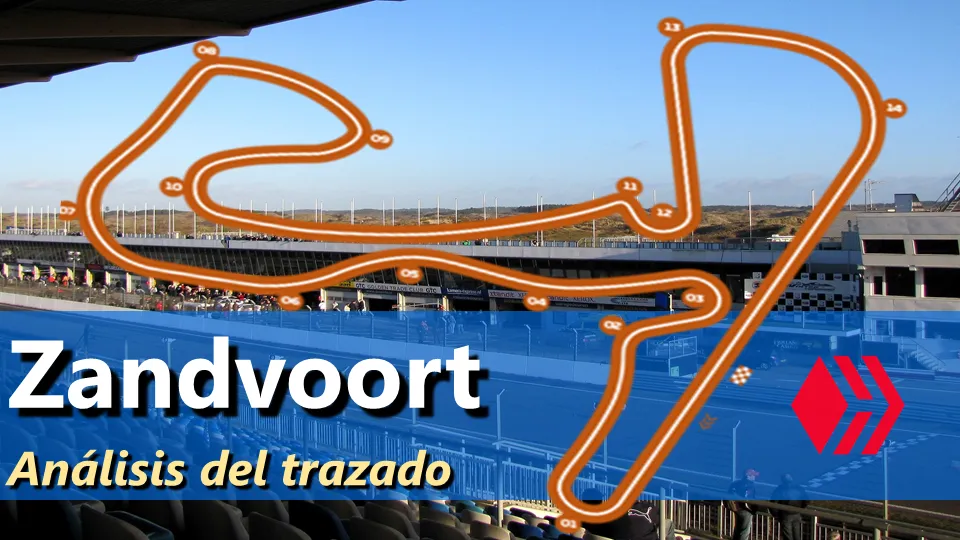
Se ubica frente al mar, algo a tener muy en cuenta ya que el viento marino, aunque no parezca, podría tener ciertos efectos sobre la mecánica de los autos. En la Fórmula 1 no se puede descuidar ningún aspecto relacionado a la ingeniería. Este circuito fue reacondicionado en 2019 para albergar carreras de Fórmula 1, agregando algunas tribunas temporales tal como el Melbourne. Finalmente no se pudo correr en 2020 por temas sanitarios, pero sí en 2021.
It is located in front of the sea, something to be taken into account since the sea wind, although it may not seem so, could have certain effects on the mechanics of the cars. In Formula 1, no aspect related to engineering can be ignored. This circuit was reconditioned in 2019 to host Formula 1 races, adding some temporary grandstands just like Melbourne. Finally it could not be raced in 2020 due to sanitary issues, but it did in 2021.

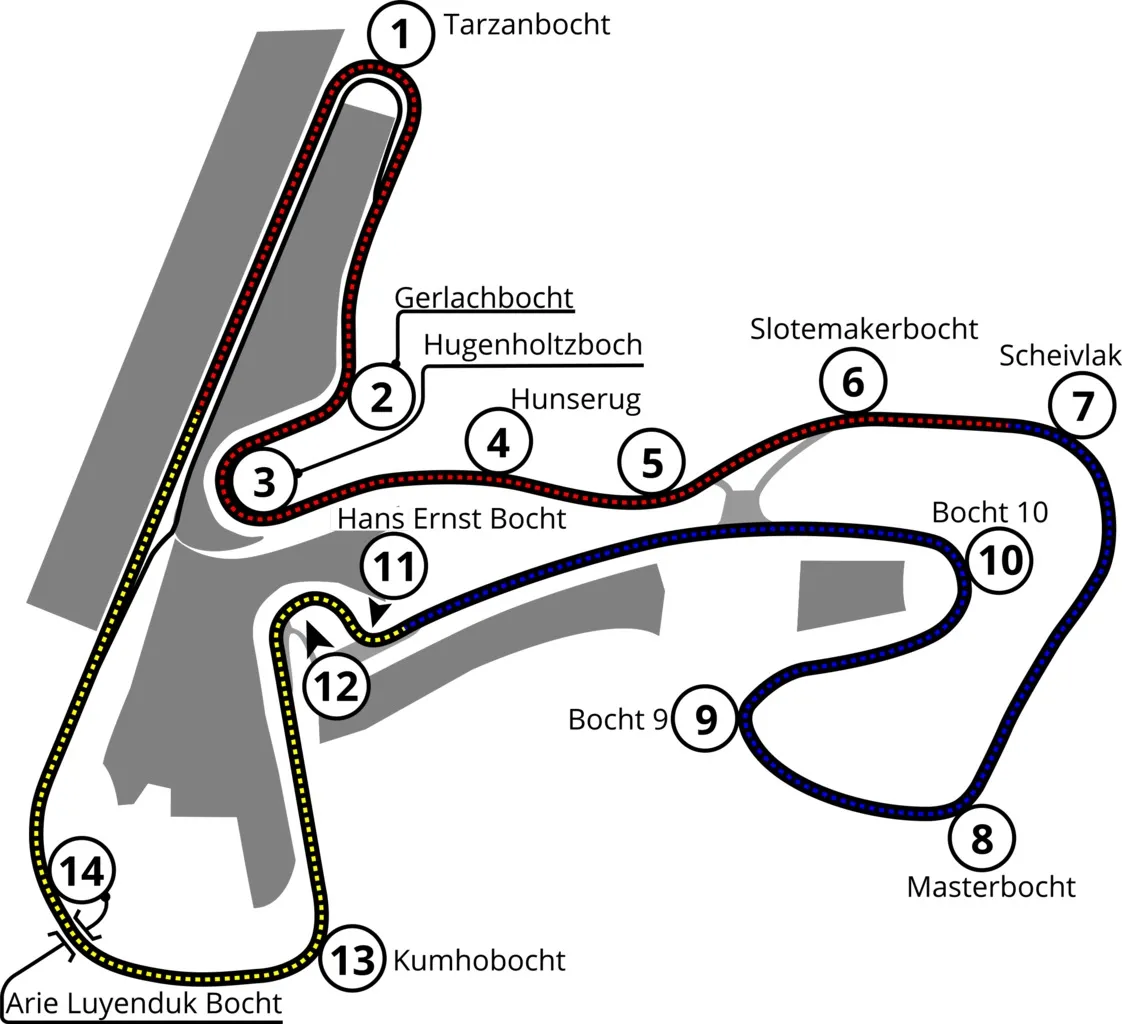
Se inauguró en 1949, y fue diseñado por John Hugenholtz, un diseñador de circuitos de automovilismo, quien participó en el diseño de otros circuitos como Suzuka, Zolder, Jarama. entre otros. Podemos ver que las primeras curvas tienen cierto "parecido" con las primeras curvas de Suzuka. El circuito original se muestra en la siguiente imagen (gris).
It was inaugurated in 1949, and was designed by John Hugenholtz, a designer of motor racing circuits, who participated in the design of other circuits such as Suzuka, Zolder, Jarama. among others. We can see that the first curves have a certain " similarity" with the first curves of Suzuka. The original circuit is shown in the following image (gray).
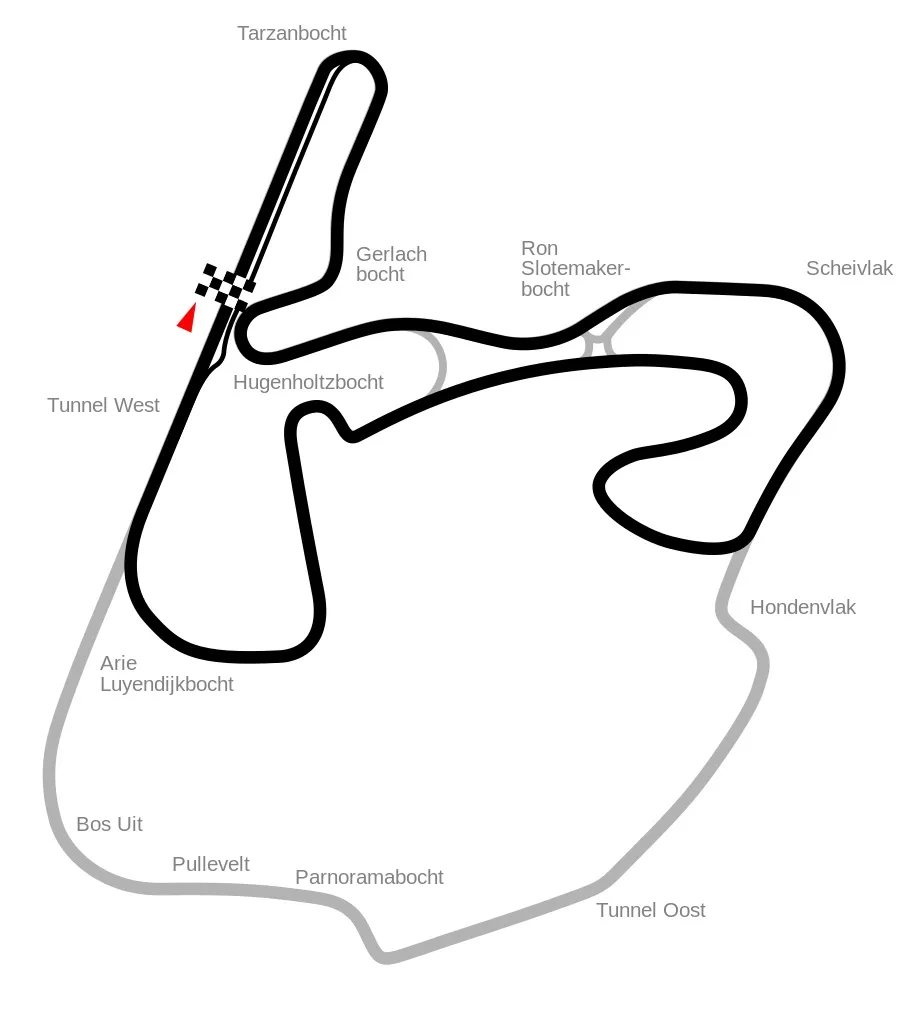
El circuito consta de peraltes, subidas y bajadas, tal como muchos de los circuitos clásicos como Spa, Red Bull Ring, Interlagos, etc. El peralte, sin embargo, es algo aún más raro en la Fórmula 1, presente en pocos circuitos modernos. Podemos ver también que el circutio moderno también conserva mucho de la esencia de circuitos clásicos, con curvas muy redondeadas y de media-alta velocidad, especialmente la curva 7, la cual se toma luego de una sección de curvas a fondo y se frena solo levemente.
The circuit consists of bankings, ups and downs, just like many of the classic circuits such as Spa, Red Bull Ring, Interlagos, etc. The banking, however, is something even rarer in Formula 1, present in few modern circuits. We can also see that the modern circuit also retains much of the essence of classic circuits, with very rounded and medium-high speed corners, especially turn 7, which is taken after a section of high speed corners and is only slightly braked.

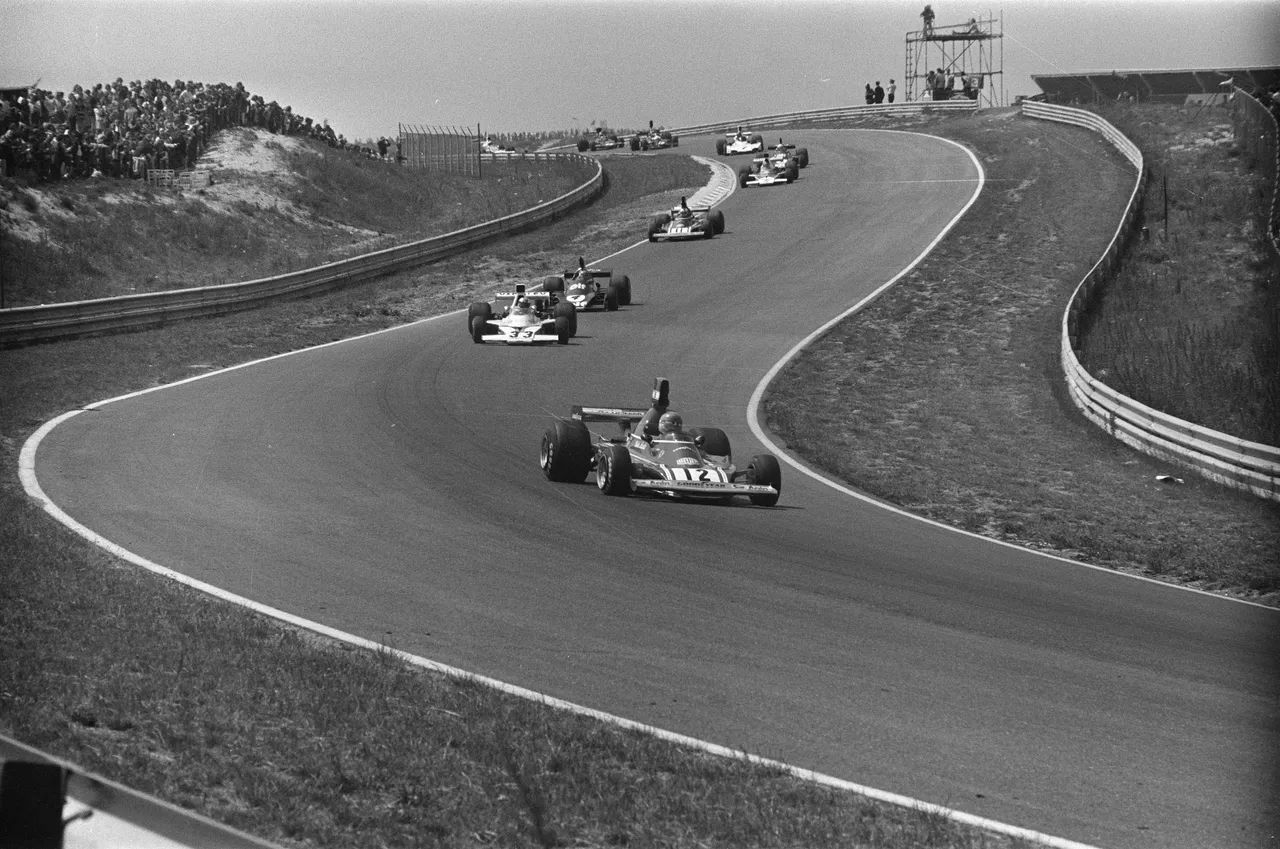
Tal como se observa en fotos antiguas y en vistas aéreas, hay presencia de colinas y elevaciones que le dan al circuito subidas y bajadas que gustan mucho a los pilotos y le dan vistosidad a las carreras. En Portimao y Mugello también se presentan elevaciones de este tipo, lo cual les da una esencia especial. Lo mismo podría decirse de algunos circuitos permanentes de la IndyCar, los cuales tienen cierto parecido con Zandvoort.
As can be seen in old photos and aerial views, there are hills and elevations that give the circuit climbs and descents that are very popular with the drivers and make the races more interesting. In Portimao and Mugello there are also elevations of this type, which gives them a special essence. The same could be said of some permanent IndyCar circuits, which have a certain resemblance to Zandvoort.

El circuito moderno, el cual fue inicialmente construido en 1999, contiene un sector de curvas un poco más técnico, los cuales son las curvas 11 y 12, donde los auto reducen su velocidad de manera importante. Esta zona del circuito se asemeja más a lo que veríamos en un circuito moderno. Sin embargo, la curva 11 viene desúés de una recta donde es posible adelantar usando el DRS (Drag Reduction System).
The modern circuit, which was initially built in 1999, contains a slightly more technical cornering sector, namely turns 11 and 12, where the cars slow down significantly. This area of the circuit is more similar to what we would see on a modern circuit. However, turn 11 comes after a straight where it is possible to overtake using the DRS (Drag Reduction System).
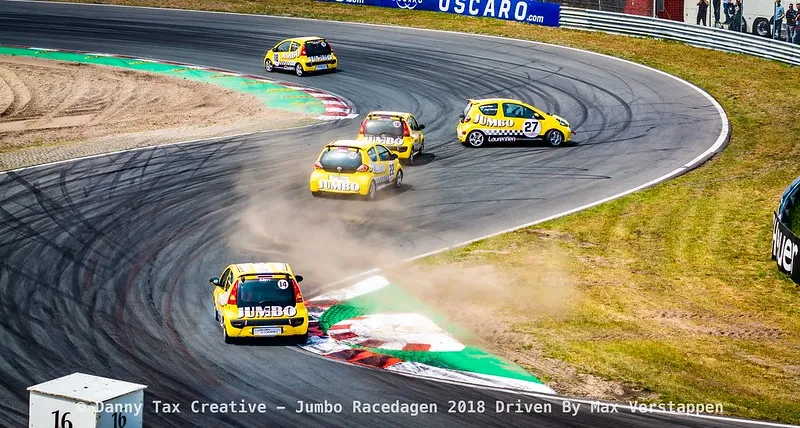
Las curvas 13 y 14 tampoco forman parte del trazado original. La curva 13 también tiene características más modernas, sin embargo, es una curva bastante redondeada, en lugar de una curva a 90°. Además, es una curva donde hay que salir con la mayor rapidez posible para encarar la recta. La última curva contiene un peralte muy importante, el cual se toma casi a fondo para entrar a la recta principal, muy importante para propiciar adelantamientos.
Turns 13 and 14 are also not part of the original layout. Turn 13 also has more modern features, however, it is a fairly rounded curve, rather than a 90° curve. It is also a corner where you have to exit as quickly as possible to approach the straight. The last corner contains a very important bank, which is taken almost at full throttle to enter the main straight, very important for overtaking.

Este circuito es algo particular, ya que es una especie de combinación dentre Hungaroring y Portimao. Contiene rectas no tan largas y curvas que pueden llegar a dificultar los adelantamientos. Sin embargo, no es tan lento como el Hungaroring y contiene subidas y bajadas, y sectores de mayor "fluidez" que el circuito húngaro.
This circuit is somewhat particular, as it is a sort of combination between Hungaroring and Portimao. It contains not so long straights and curves that can make overtaking difficult. However, it is not as slow as the Hungaroring and contains ups and downs, and sectors of greater "fluidity" than the Hungarian circuit.
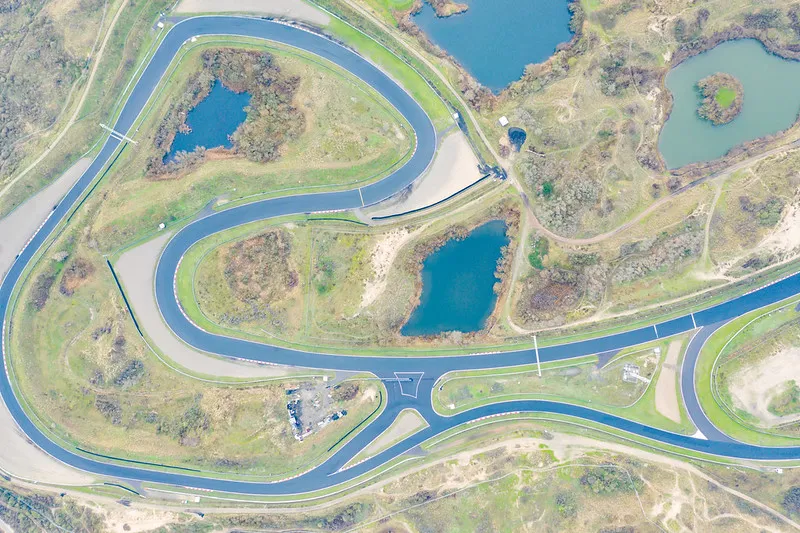
En la imagen anterior se observa el sector de curvas de la zona media (curvas de la 5 a la 10). Como se puede ver, son curvas muy redondeadas y no tan lentas, tomando en cuenta que se llega a la curva 7 a alta velocidad, y la curva 8 suele ser complicada ya que se toma muy rápido a la derecha. Diversos despistes se dieron en la curva 8 durante el fin de semana.
In the previous image you can see the curves sector of the middle zone (curves 5 to 10). As can be seen, they are very rounded and not so slow, taking into account that turn 7 is reached at high speed, and turn 8 is usually complicated since it is taken very fast to the right. There were several errors in turn 8 during the weekend.


Este circuito beneficia mucho a los autos con buena eficiencia aerodinámica, lo cual combinado con un motor decente, genera lo que vimos el pasado domingo, un Verstappen imbatible en su Red Bull. Las rectas cortas no benefician tanto a los motores más potentes, por lo cual Red Bull y Alpha Tauri con Gasly se vieron muy sólidos en dicho Gran Premio.
Al final de todo, tuvimos adelantamientos muy vistosos tanto en la curva 1 como en otras curvas del circuito. Este circuito en mi opinión, merece quedarse muchos años en la Fórmula 1, aunque quizás sería bueno alargar un poco la recta principal para permitir mayor cantidad de adelantamientos.
Al final de todo, tuvimos adelantamientos muy vistosos tanto en la curva 1 como en otras curvas del circuito. Este circuito en mi opinión, merece quedarse muchos años en la Fórmula 1, aunque quizás sería bueno alargar un poco la recta principal para permitir mayor cantidad de adelantamientos.
This circuit greatly benefits cars with good aerodynamic efficiency, which combined with a decent engine, generates what we saw last Sunday, an unbeatable Verstappen in his Red Bull. The short straights don't benefit the more powerful engines as much, which is why Red Bull and Alpha Tauri with Gasly looked very solid in that Grand Prix.
At the end of it all, we had very spectacular overtakes both in turn 1 and in other corners of the circuit. This circuit in my opinion, deserves to stay many years in Formula 1, although perhaps it would be good to lengthen a little the main straight to allow more overtaking.
At the end of it all, we had very spectacular overtakes both in turn 1 and in other corners of the circuit. This circuit in my opinion, deserves to stay many years in Formula 1, although perhaps it would be good to lengthen a little the main straight to allow more overtaking.

También te recomiendo visitar mi anterior publicación: Análisis del circuito Spa-Francorchamps (Bélgica)
I also recommend you to visit my previous post: Analysis of the Spa-Francorchamps circuit (Belgium)

Deja tu comentario o comparte (reblog) esta publicación si te ha parecido interesante.
Leave a comment or share (reblog) this post if you found it interesting.
Translated to English language with the help of DeepL.com
| ¡Gracias por visitar! — Deja tu comentario 🚥🏆  |
